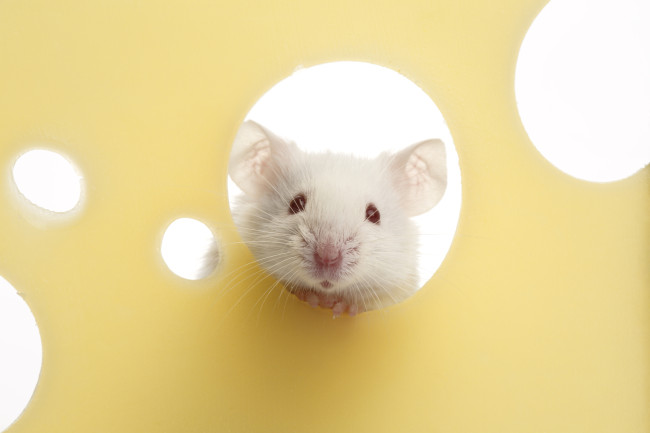Help, I have a wild animal in my apartment! What do I do?

Squirrels may be cute, but they get to seeming a lot less so when they're in your apartment.
Most of the time when a wild animal invades a New Yorker's apartment, it is some kind of rodent. But living in an urban area does not preclude the possibility of a less expected critter making its way into your apartment or house. Open windows, faulty screens, and other openings enable birds, squirrels, and raccoons to find their way in.
Here's what you should know, and what you should do, if things get wild at your place.
It's a bird!
If a feathered friend has somehow made it into your living space, there are primarily two courses of action.
"The main option is to leave a window open and let the bird leave on its own," says Rita McMahon of the Manhattan's Wild Bird Fund. "They usually do."
However, that really only works during daylight hours, as birds are daytime animals, and with the exception of owls, have poor night vision. At night, McMahon suggest locating the bird, turning off all the lights inside, catching it, and releasing it outside.
Calling the city
In some cases, the city's Department of Animal Control and Welfare will come remove an animal. Those scenarios include if a raccoon is sick or injured, or if a raccoon, fox, skunk, or bat has fought with, scratched or bitten, or been attacked by a family pet. Concern about rabies is the driving force behind this policy. Read more about raccoons and rabies here.
Call 311 to report the animal and incident.
When the city won't come (i.e., most of the time)
If your invader (squirrel, raccoon, bat etc.) is healthy, it's classified as a nuisance, and 311 will direct you to 411 to find a wildlife removal service, which is not the same as an exterminator. Expect to pay at least $350 for wildlife removal. In some cases you can try to get the animal out on your own, but this task is best left to a professional.
"If you have a toothache you see a dentist. If you have a leak, you call a plumber. This is probably not something you should handle yourself," says David Quinn, who runs Long Island's DQ Pest Control. "Leave [the animal] alone, walk into another room and close the door."
Wildlife removal services are licensed by the Department of Environmental Conservation, and contractors should be able to produce their license if asked. You can find licensed wildlife removal professionals in your county on the DEC's website. Additionally, any traps used by a service must have the licensed company or person's name and address on them.
Not all removal professionals use traps. John Terpo, who runs the pest removal company Trapper John out of Middle Village, Queens, actually specializes in "evicting and releasing," that is, driving the animal out of your home, back into the wild.
"It doesn't want to be in your structure any more than you want it there," he says.
DIY removal
In general, this is not a good idea. But not every professional we spoke to was opposed, and if you're feeling brave or impatient while you wait for experienced help, consider the following steps to evicting your unwanted tenant:
First, it is possible that the animal may be able to find its way out on its own, so it's worth leaving a window or two open, closing the door, and waiting. Terpo says this is more likely to happen with raccoons than squirrels, the latter of which are a bit "dopey."
Aside from the passive raccoon removal strategy, it's best to leave engaging these masked intruders to the professionals. And if you are going to engage with a squirrel, wear eye protection, and armor yourself with several layers from head to toe.
"Squirrels will accidentally jump on objects and people, so you need protective eyewear," Terpo says.
Also, make sure your tetanus shot is up to date.
Beyond that, Terpo advises, "Grab [the squirrel] with your hand gently."
You Might Also Like



























